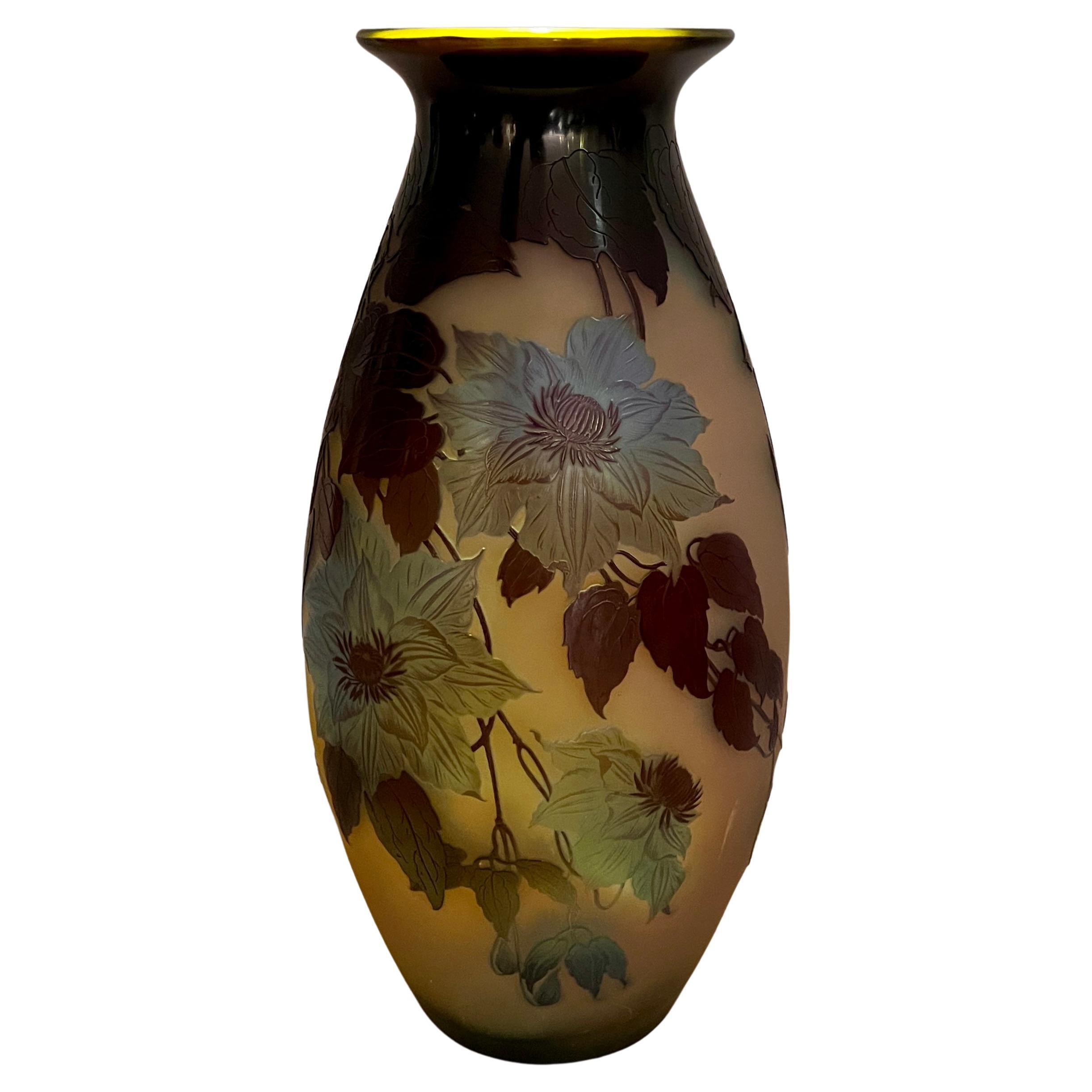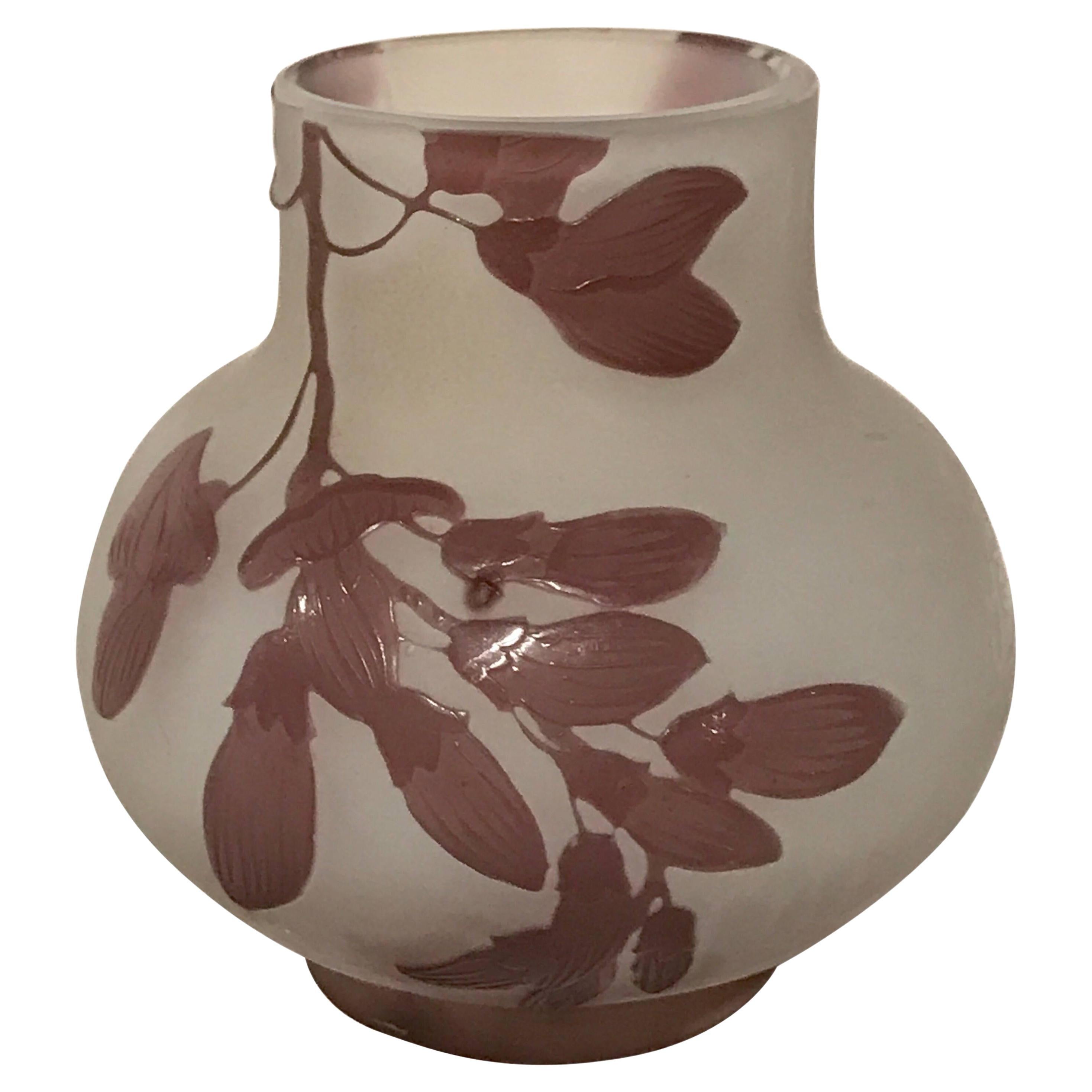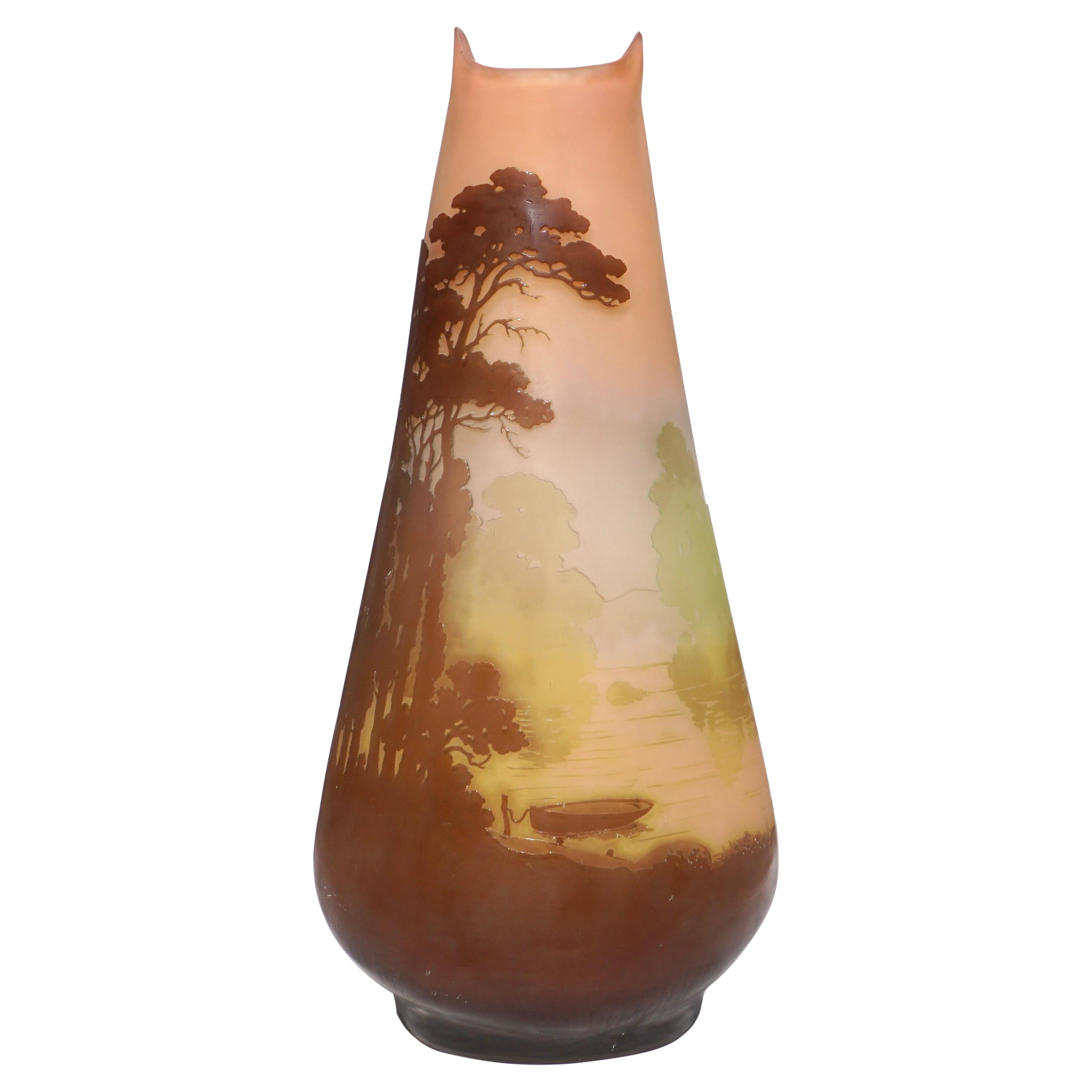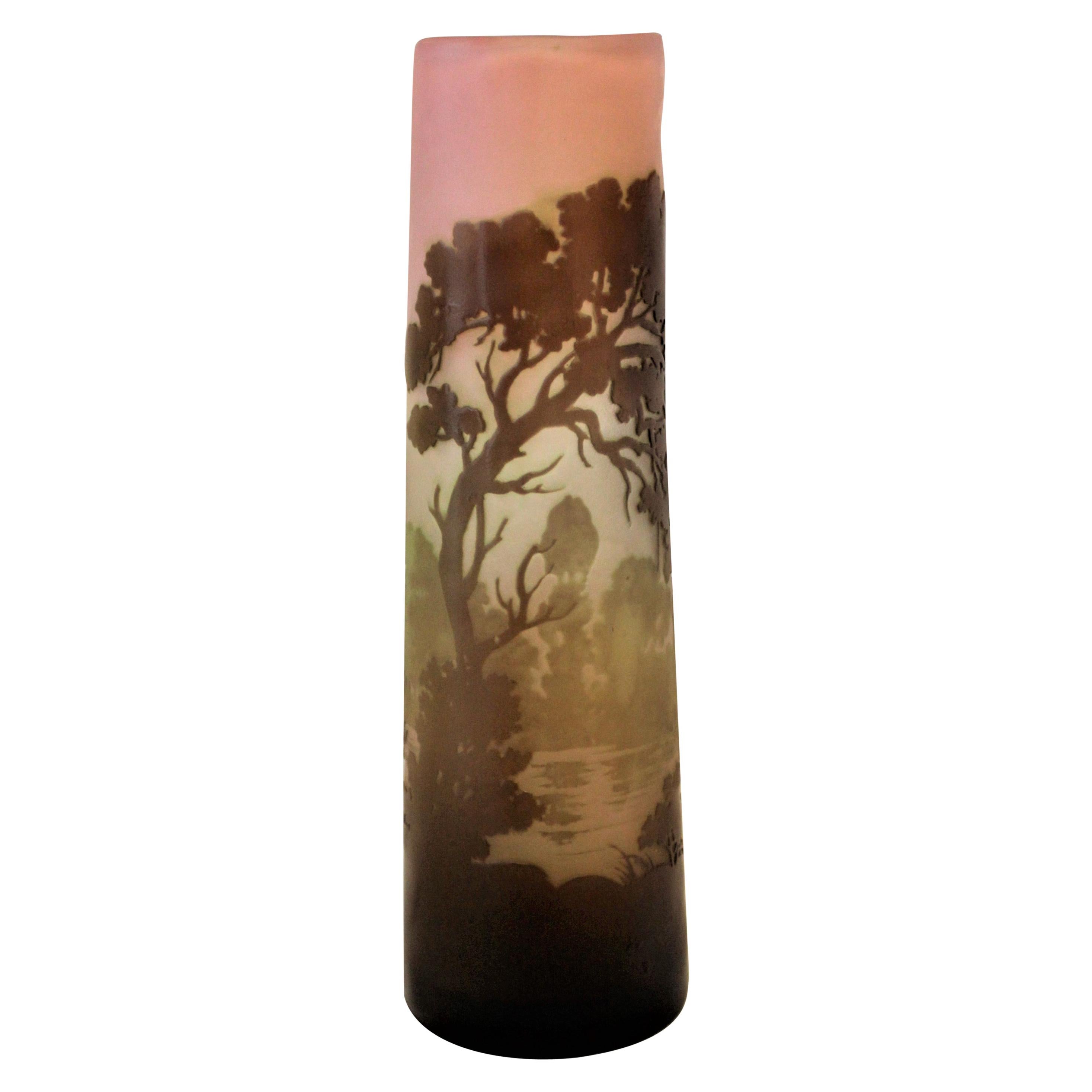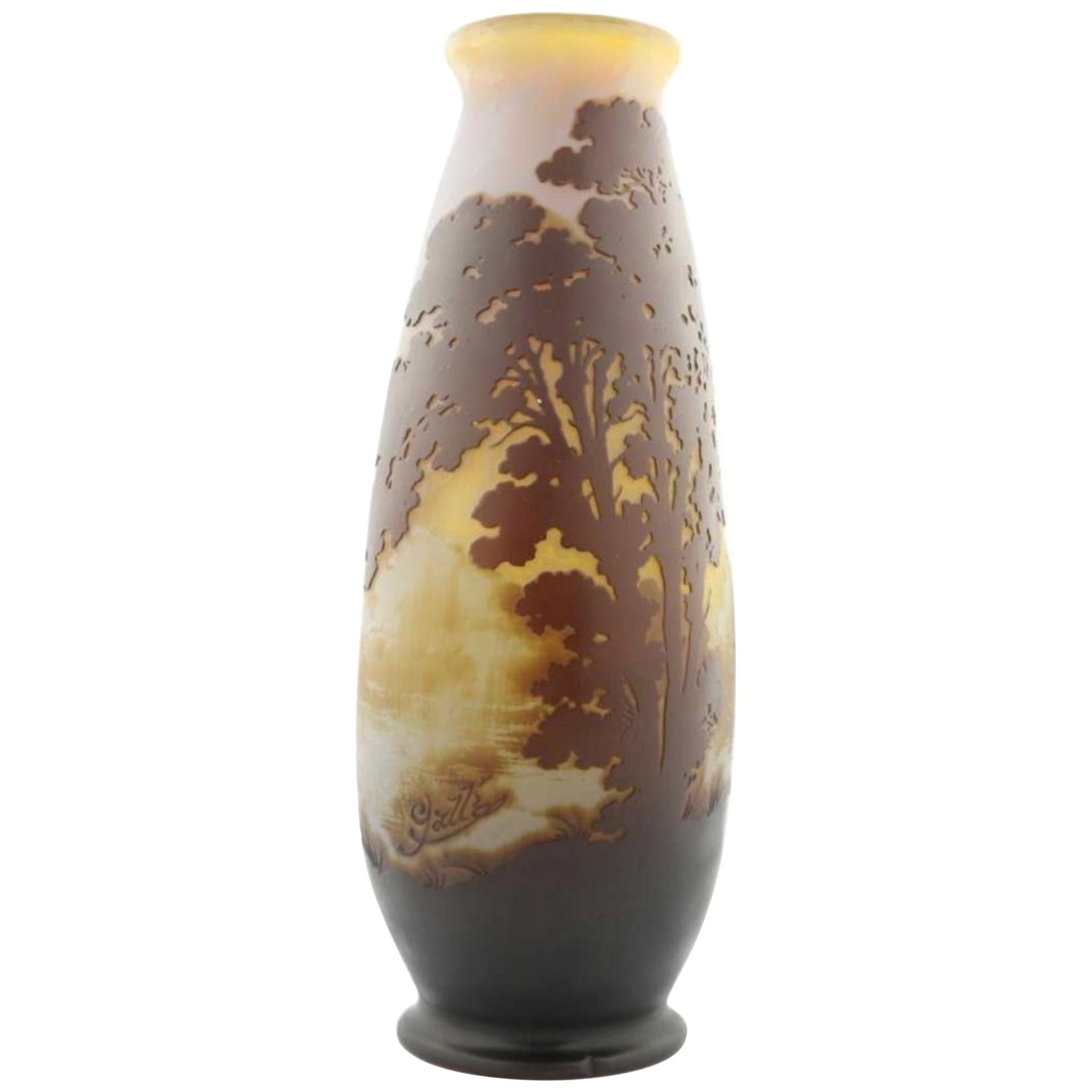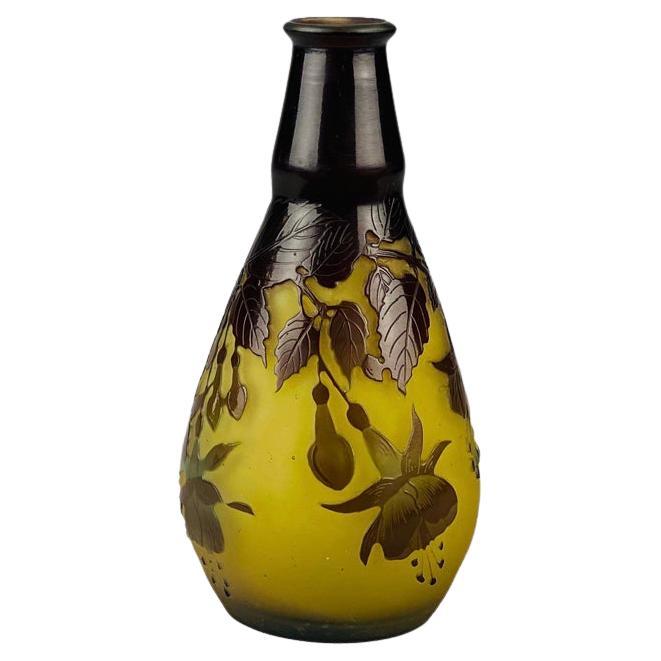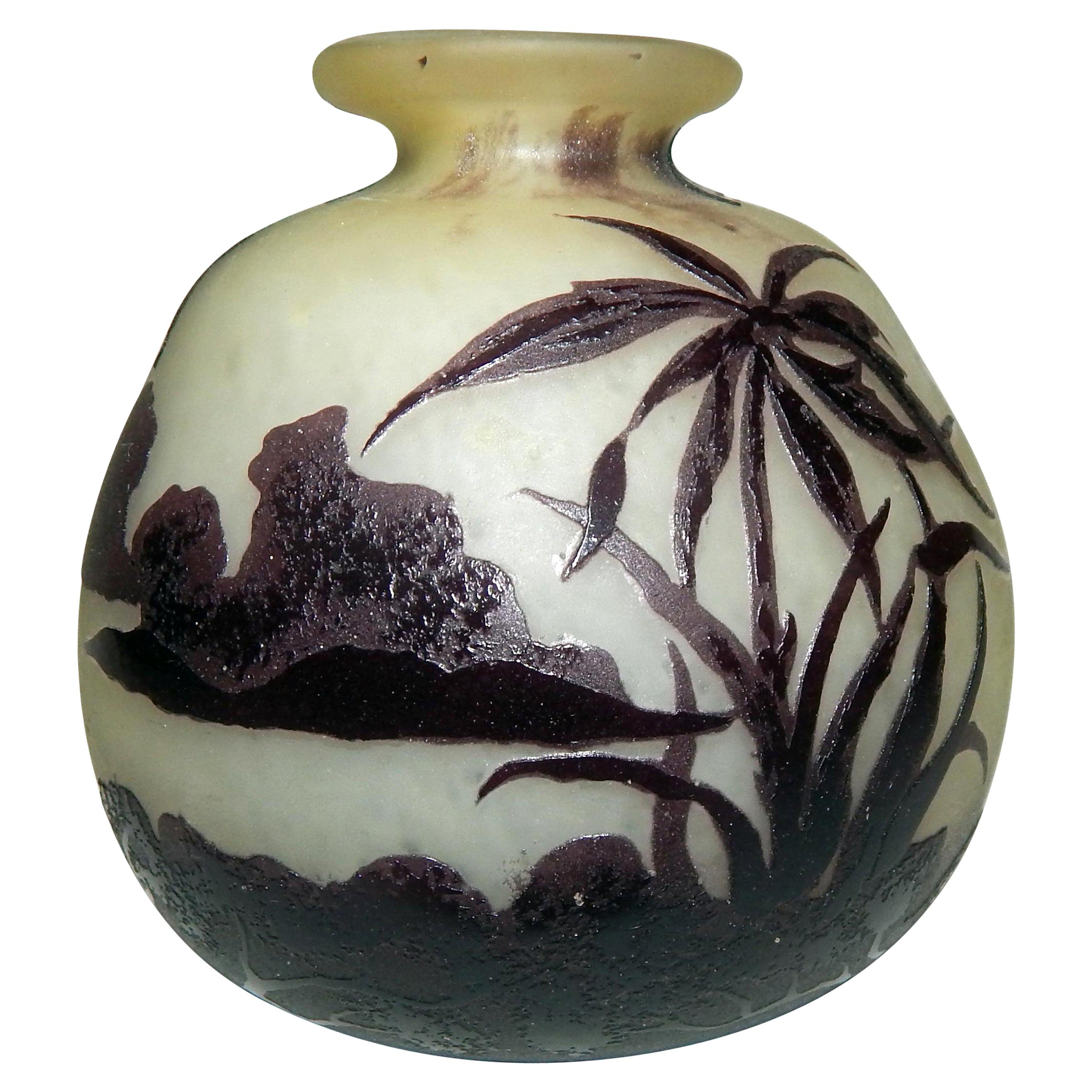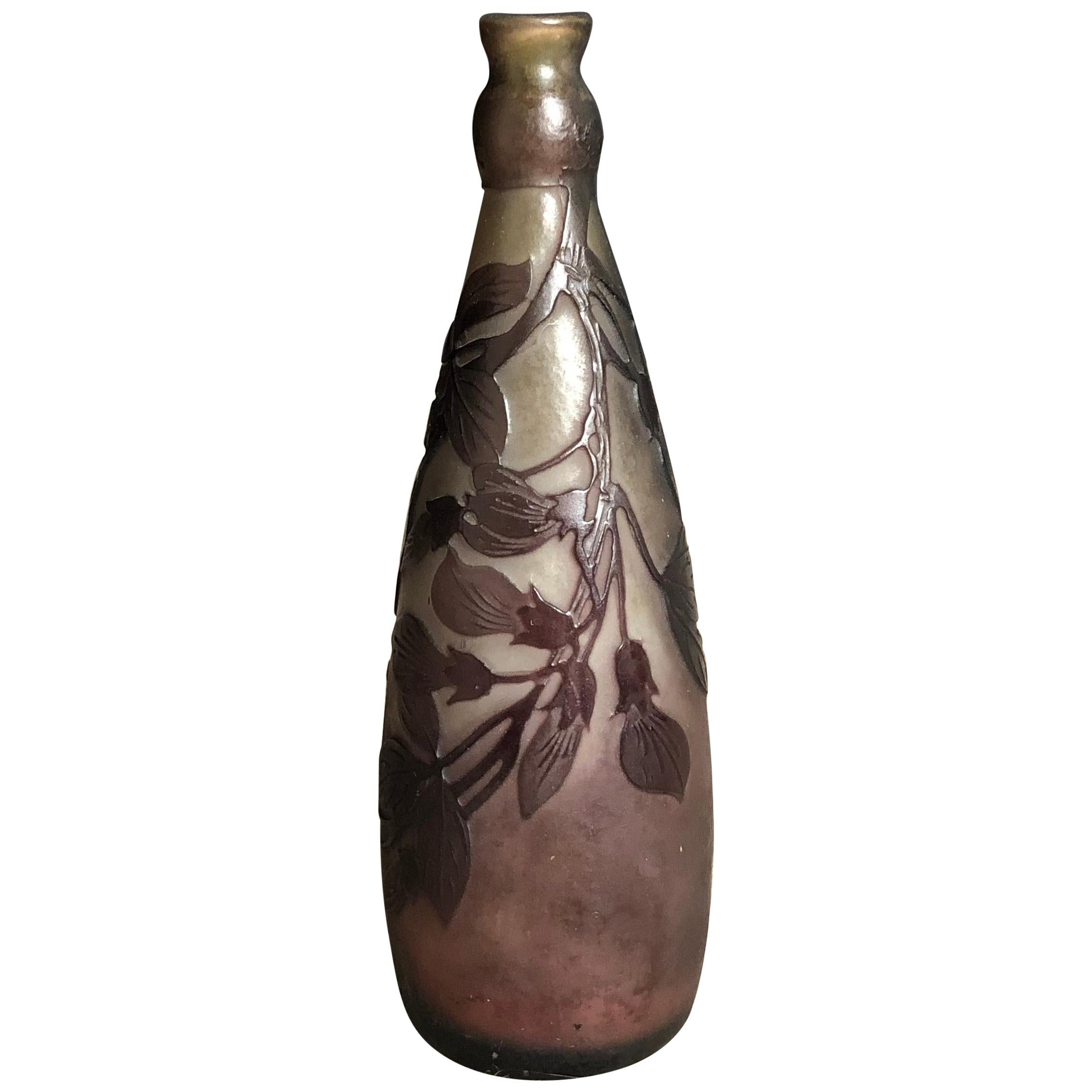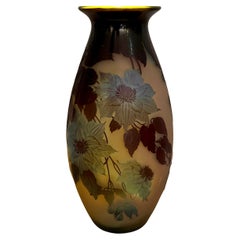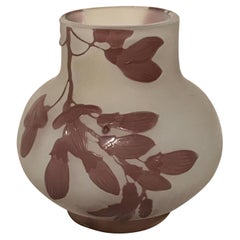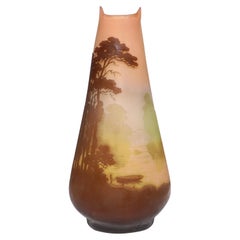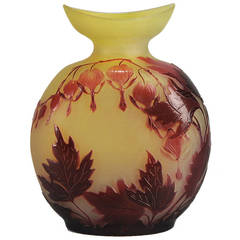
Hearts Cameo Vase
View Similar Items
1 of 10
Hearts Cameo Vase
About the Item
- Creator:Emile Gallé (Manufacturer)
- Dimensions:Height: 8.27 in (21 cm)Diameter: 0.01 in (0.1 mm)
- Style:Art Nouveau (Of the Period)
- Materials and Techniques:
- Place of Origin:
- Period:
- Date of Manufacture:1890
- Condition:Wear consistent with age and use.
- Seller Location:London, GB
- Reference Number:Seller: 55841stDibs: LU96851252892
You May Also Like
- Large Galle Cameo Glass VaseBy Emile GalléLocated in Los Angeles, CAA large and impressive original Art Nouveau Emile Gallé cameo glass vase. colourless glass with a degrading amber layer overlaid in brown blue and green, e...Category
Early 20th Century French Art Nouveau Vases
MaterialsArt Glass
$12,800 - Fine Galle Cameo Glass Cabinet VaseBy Emile GalléLocated in West Palm Beach, FLFine Galle Cameo glass cabinet vase, with lavender cameo floral decoration, signed in the glass. Measure: The opening is 1.75" diameter.Category
Antique 1890s French Art Nouveau Vases
MaterialsArt Glass
- Large Emile Galle Scenic Cameo VaseBy Emile GalléLocated in Dallas, TXEmile Galle scenic wheel carved and acid etched cameo vase. A beautiful and tall cameo vase by Galle. The 18 - 1/2” tall vase has a background of muted yellow glass near the base, which progresses to blue/gray at mid-vase, and then peach towards the top. Brown, cameo cut trees are generously displayed across the body of the vase, with the addition of a boat in the lake. Signed "Galle". Dimensions: 18 - 1/2” x 10” x 8”. Condition: Very good Émile Gallé (8 May 1846 in Nancy – 23 September 1904 in Nancy) was a French artist and designer who worked in glass, and is considered to be one of the major innovators in the French Art Nouveau movement. He was noted for his designs of Art Nouveau glass art and Art Nouveau furniture, and was a founder of the École de Nancy or Nancy School, a movement of design in the city of Nancy, France. Gallé born on 4 March 1846 in the city of Nancy, France. His father, Charles Gallé, was a merchant of glassware and ceramics who had settled in Nancy in 1844, and his father-in-law owned a factory in Nancy which manufactured mirrors. His father took over the direction of his mother's family business, and began to manufacture glassware with a floral design. He also took over a struggling faience factory and began manufacturing new products. The young Gallé studied philosophy and natural science at the Lycée Imperial in Nancy. At the age of sixteen he went to work for the family business as an assistant to his father, making floral designs and emblems for both faience and glass. In his spare time he became an accomplished botanist, studying with D.A. Godron, the director of the Botanical Gardens of Nancy and author of the leading textbooks on French flora. He collected plants from the region and from as far away as Italy and Switzerland. He also took courses in painting and drawing, and made numerous drawings of plants, flowers, animals and insects, which became subjects of decoration. At the age of sixteen he finished the Lycée in Nancy and went to Weimar in Germany from 1862–1866 to continue his studies in philosophy, botany, sculpture and drawing. In 1866, to prepare himself to inherit the family business, he went to work as an apprentice at the glass factory of Burgun and Schwerer in Meisenthal, and made a serious study of the chemistry of glass production. Some of his early glass and faience works for the family factory at Saint-Clémont were displayed at the 1867 Paris Universal Exposition. In early 1870 he designed a complete set of dishware with a rustic animal designs for the family enterprise. During this time he became acquainted with the painter, sculptor and engraver Victor Prouvé, an artist of the romantic "troubadour" style, who became his future collaborator in the Nancy School. He enlisted for military service in the Franco-Prussian War in 1870, then was demobilised after the disastrous French defeat in 1871 and the French loss to Germany of much of the province of Lorraine, including Meisenthal where he had done his apprenticeship. Thereafter the Cross of Lorraine, the patriotic symbol of the region, became part of his signature on many of his works of art. After his demobilization Gallé went to London, where he represented his father at an exhibition of the arts of France, then to Paris, where he remained for several months, visiting the Louvre and Cluny Museum, studying examples of ancient Egyptian art, Roman glassware and ceramics, and especially early Islamic enamelled...Category
Antique Early 1900s French Art Nouveau Vases
MaterialsArt Glass
- Galle Cameo Art Glass Landscape VaseBy Emile GalléLocated in Hamilton, OntarioThis antique signed Galle vase was made in France in approximately 1900 in the period Art Nouveau style. The vase in done in multiple layers of color...Category
Early 20th Century European Art Nouveau Vases
MaterialsGlass
- Cameo Glass Vase by Émile GalléBy Emile GalléLocated in New Orleans, LAExceptional in both size and artistry, this cameo art glass vase is the work of the famed Art Nouveau master Émile Gallé, one of the most highly regarded names in French glassmaking....Category
20th Century French Art Nouveau Vases
MaterialsGlass
- Emile Galle Cameo Glass Vase ClematisBy Emile GalléLocated in Bochum, NRWEmile Gallé Cameo glass vase, richly decorated with branches with flowers, blooms, and leaves of Clematis. Shaped as a small baluster, this beautiful vase is made of multilayered gla...Category
Antique Early 1900s French Art Nouveau Vases
MaterialsGlass
Recently Viewed
View AllMore Ways To Browse
Fat Lava Vase Italy
Hutschenreuther Hohenberg
Marble Pedestal Bowl Large
Spiky Vessel
Wooden Mallards
Alexandre Kostanda On Sale
Bosco Carlo Moretti
Gunnar Nylund Hedgehog
Haeger Earth Wrap
Hedgehog Gunnar
Hedgehog Vase
Lalique Dampierre Vase
Louis Potpourri French
Nylund Hedgehog
Raymor Fish
Royal Haeger Earth Wrap
Venini Cosmos
Alvar Aalto 3030
